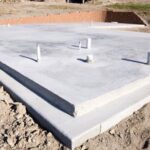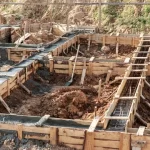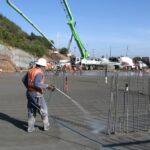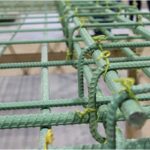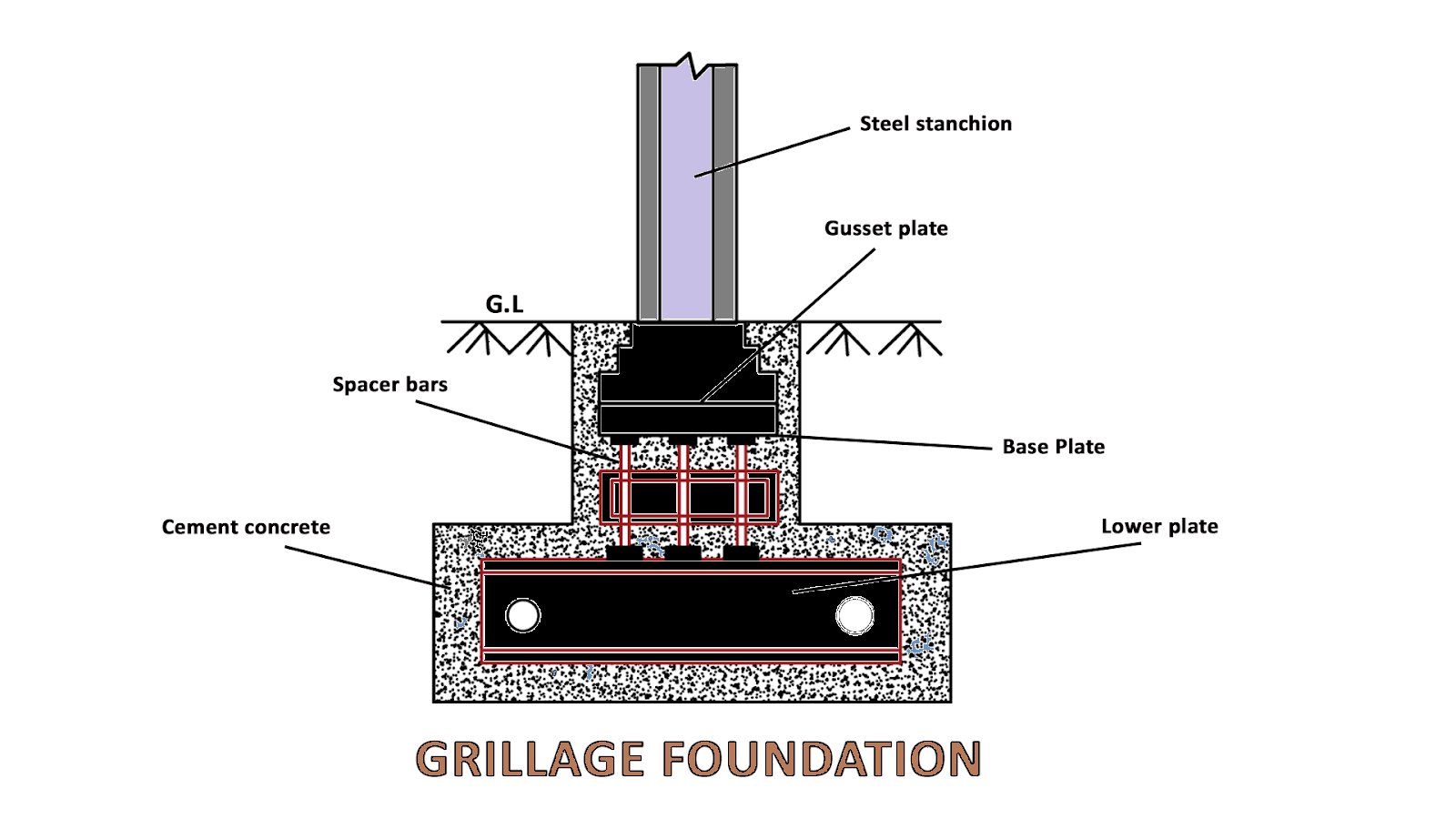
Introduction
In the world of civil engineering, foundations play a critical role in providing stability and support to structures. One such type of foundation that has gained popularity over the years is the grillage foundation. This innovative solution offers a host of advantages and has found widespread application in various construction projects. In this blog, we will explore the definition, principles, advantages, and applications of the grillage foundation, shedding light on its significance in the field of civil engineering. 🏗️
Definition of Grillage Foundation:
A grillage foundation is a type of shallow foundation that consists of a series of interconnected steel beams or concrete beams arranged in a grid-like pattern. It is designed to distribute the load of a structure evenly to the underlying soil, thereby preventing excessive settlement and ensuring structural stability. The beams in a grillage foundation are typically placed horizontally and perpendicular to the walls or columns they support, creating a strong and durable foundation system.
The depth of the foundation is limited from 1000 mm to 1500 mm.
Principles of Grillage Foundation:
The design and implementation of a grillage foundation adhere to several principles that contribute to its effectiveness:
1.Load Distribution:
The primary principle of a grillage foundation is to distribute the load of a structure over a larger area. By dividing the load into multiple beams, the foundation can distribute the weight more uniformly, reducing the risk of uneven settlement.
2.Rigidity and Flexibility:
The interconnected beams in a grillage foundation provide rigidity, allowing the load to be transferred efficiently. At the same time, the flexibility of the beams enables them to adapt to minor soil movements, preventing damage to the structure.
3.Differential Settlement Control:
A grillage foundation effectively controls differential settlement, which refers to variations in settlement across different areas of the foundation. By distributing the load evenly, the foundation minimizes differential settlement, ensuring the structure remains level and stable.
Types of Grillage Foundation
Grillage foundations can be further classified into three main types:
1.Steel Grillage Foundation:
This type of grillage foundation utilizes steel beams for load distribution, as mentioned earlier. Steel grillage foundations are particularly suitable for structures that demand high load-bearing capacities, such as industrial plants, bridges, and high-rise buildings. The corrosion resistance and strength of steel make it an ideal choice for such applications.
2.Reinforced Concrete Grillage Foundation:
Reinforced concrete grillage foundations employ concrete beams with embedded steel reinforcement, as mentioned earlier. This type of grillage foundation is commonly employed in residential buildings, smaller structures, and situations where the load demands are moderate. The combination of concrete and steel reinforcement offers a cost-effective and durable solution.
3.Timber Grillage Foundation:
Timber can also be used as a material for grillage foundations. Timber grillage foundations are typically employed in situations where the load requirements are relatively light, such as for smaller residential structures and temporary constructions. Timber’s lightweight nature and ease of construction make it a suitable choice for such applications, while still providing adequate load distribution.
Advantages of Grillage Foundation
The grillage foundation offers several advantages over traditional foundation systems, making it a preferred choice in various construction projects:
1.Cost-effective:
Compared to deep foundations, such as piles, the grillage foundation is relatively cost-effective. It requires less excavation and uses readily available materials like steel or concrete beams, reducing overall construction expenses.
2.Versatility:
Grillages can be designed to accommodate a wide range of structural loads and soil conditions. Their flexibility allows for customization, making them suitable for different types of structures, from residential buildings to industrial complexes.
3.Time-saving:
The construction of a grillage foundation is generally faster than deep foundation systems. Since it is a shallow foundation, it requires less time for excavation and construction, accelerating the overall project timeline.
4.Reduced Settlement:
The uniform load distribution property of a grillage foundation minimizes settlement, preventing structural damage. This advantage is particularly crucial in areas with weak or variable soil conditions.
Applications of Grillage Foundation:
Grillage foundations find applications in various construction projects, including:
1.Industrial Structures:
The heavy loads imposed by industrial structures, such as factories and warehouses, can be efficiently supported by grillage foundations. Their load distribution capability makes them ideal for such applications.
2.Transmission Towers:
Grillage foundations are commonly used for supporting transmission towers. These towers require a stable base to withstand wind and seismic loads, which can be achieved through the use of a grillage foundation.
3.Residential Buildings:
In areas with stable soil conditions, grillage foundations are often employed for residential buildings. Their versatility and cost-effectiveness make them a practical choice for individual houses and apartment complexes.
4.Bridges and Overpasses:
The grillage foundation system is suitable for supporting bridge abutments and overpasses. The load distribution property ensures the stability and longevity of these structures, even in challenging environments.
Conclusion🎯
The grillage foundation serves as an innovative solution for providing stability and load distribution in various construction projects. Its ability to evenly distribute loads, control settlement, and its cost-effectiveness make it an attractive option for engineers and builders alike. With its versatility and numerous advantages, the grillage foundation continues to play a pivotal role in ensuring the durability and safety of structures across different domains of civil engineering. ⚙️

